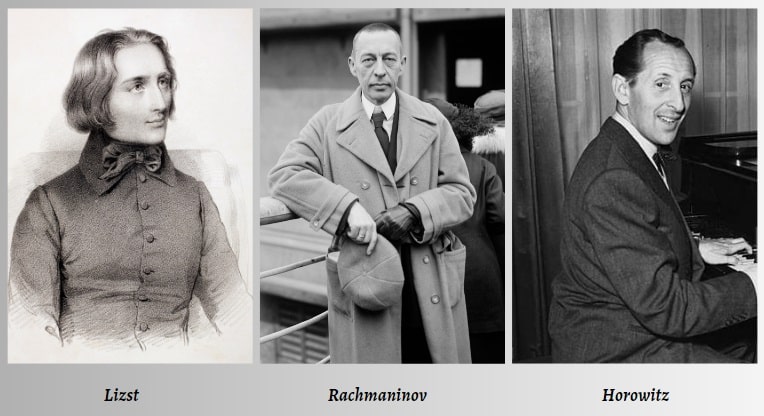
One outstanding characteristic of the Romantic period was the rise of the virtuoso pianist-composer.
Many features of the Romantic Era were somewhat extreme, particularly in terms of the size of orchestras, the duration, and scale of compositions as well as the technical challenges presented by many works.
The Virtuoso Pianists: Liszt, Rachmaninoff, and Horowitz
Pianists such as Lizst, Rachmaninov, and Chopin topped the popularity charts as they were living exemplifications of Romantic ideals.
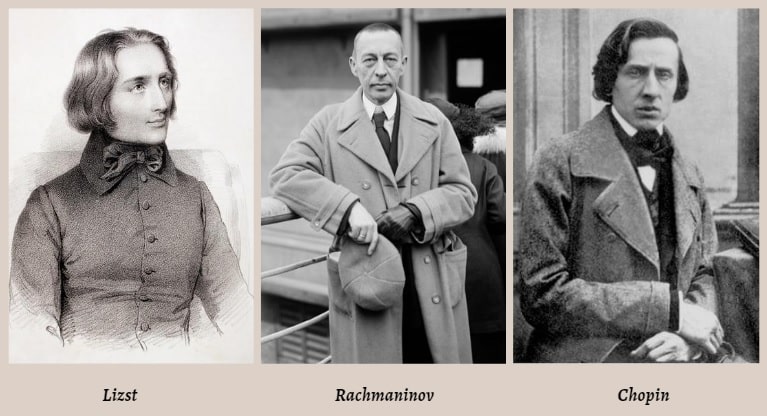
The intense, expressive nature of their compositions and indeed, their performances turned them into the superstars of their day.
Franz Liszt (1811-1886), was often singled out as a pianist whose compositions served only as a vehicle for his virtuosity. Such was Liszt’s technical skill that at times his compositions seem to offer little more than a catalogue of his abilities at the piano.
Of course, this is more than a little unfair and dismissive of an important composer and pianist from the Romantic Era. It highlights that Liszt’s exuberant nature was warmly received during this period of musical history.
Liszt’s compositions not only demonstrated his immense ability at the piano but an insight and innovation both in terms of musical form and melodic development.
Liszt composed extensively, with close to seven hundred compositions to his name. His piano work made a vital contribution to exploring new ways of writing for the instrument that, at times, closely resemble orchestral music.
Liszt’s compositions are frequently related to or inspired by nature, poems, or works of literature. Indeed, Liszt also wrote several books during his lifetime, including one on fellow composer and pianist Frederick Chopin.
Towards the end of Liszt’s life, his music abandoned his earlier period’s glittering, energetic brilliance. Liszt’s compositions turned inwards.
Some of his final compositions seem to be quite prophetic, embedded with future echoes of composers such as Debussy (who Liszt taught) and Arnold Schoenberg.
Liszt has always been a composer whose music was richly chromatic, pushing the boundaries of tonality, but in these later pieces, tonality is almost completely abandoned.
There are moments, for example, in his piece called Bagatelle Without Tonality (S216a), where Liszt moves a great distance harmonically from his earlier works. Even in these final years, Liszt never tired of experimenting.
Sergei Rachmaninoff (1873-1943) followed in the footsteps of Franz Liszt. As personalities, they probably couldn’t have been further removed, but they both shared their extraordinary command of the piano and magical gifts as composers.
Rachmaninoff’s music, in a similar way to Liszt’s, was deeply passionate and intricately crafted. His ability to conjure the full range of human emotions from the piano alone shows the remarkable gift Rachmaninoff possessed.
Even though Rachnaminoff’s output was dominated by piano music, including four piano concertos, he also composed orchestral and choral works that are equal in their beauty.
I think it’s almost indisputable that Rachmaninoff had an unusual talent for crafting a melody.
Naturally, his use of harmony was both highly individual and distinctive, and that underpins his melodies, yet there is something about Rachmaninoff’s melodies that plug directly into one’s soul in a way few composers do.
Liszt certainly produced music of great intensity and passion, too, but for me, his compositions don’t achieve the same level of emotional response as Rachmaninoff’s do.
Certainly, Rachmaninoff poured his troubles and triumphs into his compositions, and his performances as composers often do, however, there seems to be an additional dimension in Rachmaninoff’s music.
As a pianist, Rachmaninoff received first-class tuition from an early age. His gifts for the piano shone through quickly, and his time at the Moscow Conservatory enabled Rachmaninoff to refine his innate abilities.
If you have ever heard or read through a piano score of Rachmaninoff’s music, you see what a phenomenal pianist he was early on.
He did indeed possess extraordinarily large hands that enabled him to span a huge range of notes on the piano, but his dexterous touch on the instrument, coupled with his virtuosic technique, directed his compositional style.
This is not to say that Rachmaninoff purely wrote technically difficult pieces of little substance. Nothing could be further from the truth.
His piano music faultlessly demonstrates a devotion to the masters of the past like JS Bach and Schubert, blended with smooth chromatic harmonies that touch on impressionism and, to my ears, jazz.
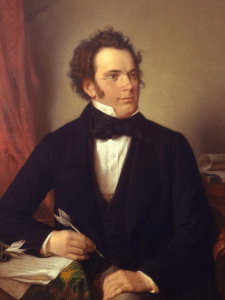
The formal structures of Rachmaninoff’s works are a testament to his craft. Each piece is seamlessly and often succinctly constructed to convey or portray his deepest feelings.
It makes some pieces quite difficult to hear and many even harder to perform with the correct mixture of technical command and expression.
Franz Liszt and Sergei Rachmaninoff’s impact on pianists and composers past and present has been nothing short of monumental.
Both epitomise that iconic image of the suffering often misunderstood and undervalued artist who lives for their art and in so doing creates something eternal.
Whilst Vladimir Horowitz (1903-1989) was not a composer, he was one of the most influential and celebrated pianists of his age.
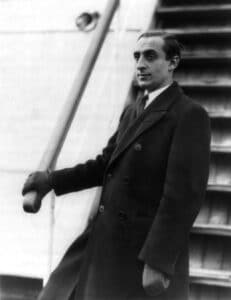
Russian-born like Rachmaninoff, Horowitz enthralled and entranced his audiences with his virtuosity and faultless control of the piano.
As a young pianist, largely taught only by his Mother, who was also a gifted pianist, Horowitz played for Russian composer Alexander Scriabin.
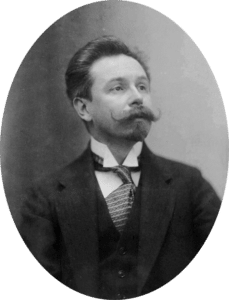
Horowitz’s father was a close associate of Scriabin’s, and this opened the door for Horowitz into a world that would remain his for the rest of his performing career.
Scriabin described the young pianist as very gifted. Horowitz was viewed by many as the single most accomplished pianist to interpret and perform the works of Scriabin. (His three-disc set remastered and released by Sony of the Scriabin recordings is well worth listening to).
Horowitz’s command of the piano was probably in all ways equal to that of Liszt and Rachmaninoff, although this kind of comparison fails to recognise the uniqueness of each of these great men.
Throughout his lengthy career as a concert pianist, Horowitz championed the works of many composers. He was the first to make a recording of Rachmaninoff’s Third Piano Concerto with the London Symphony Orchestra in 1930.
In 1932, Horowitz recorded Liszt’s Piano Sonata in B minor for HMV, a recording and interpretation that many feel has never been surpassed.
Horowitz was equally known for his delicate performance of Robert Schuman’s Scenes from Childhood, which showed the immense range of dynamic and expressive control he possessed.
His recordings of Chopin and Scarlatti are extremely well respected, as are his interpretations of the work of Clementi.

Dr. Wildridge, I’m delighted that you mentioned the Bagatelle and pleasantly surprised that you shared my recording of it.